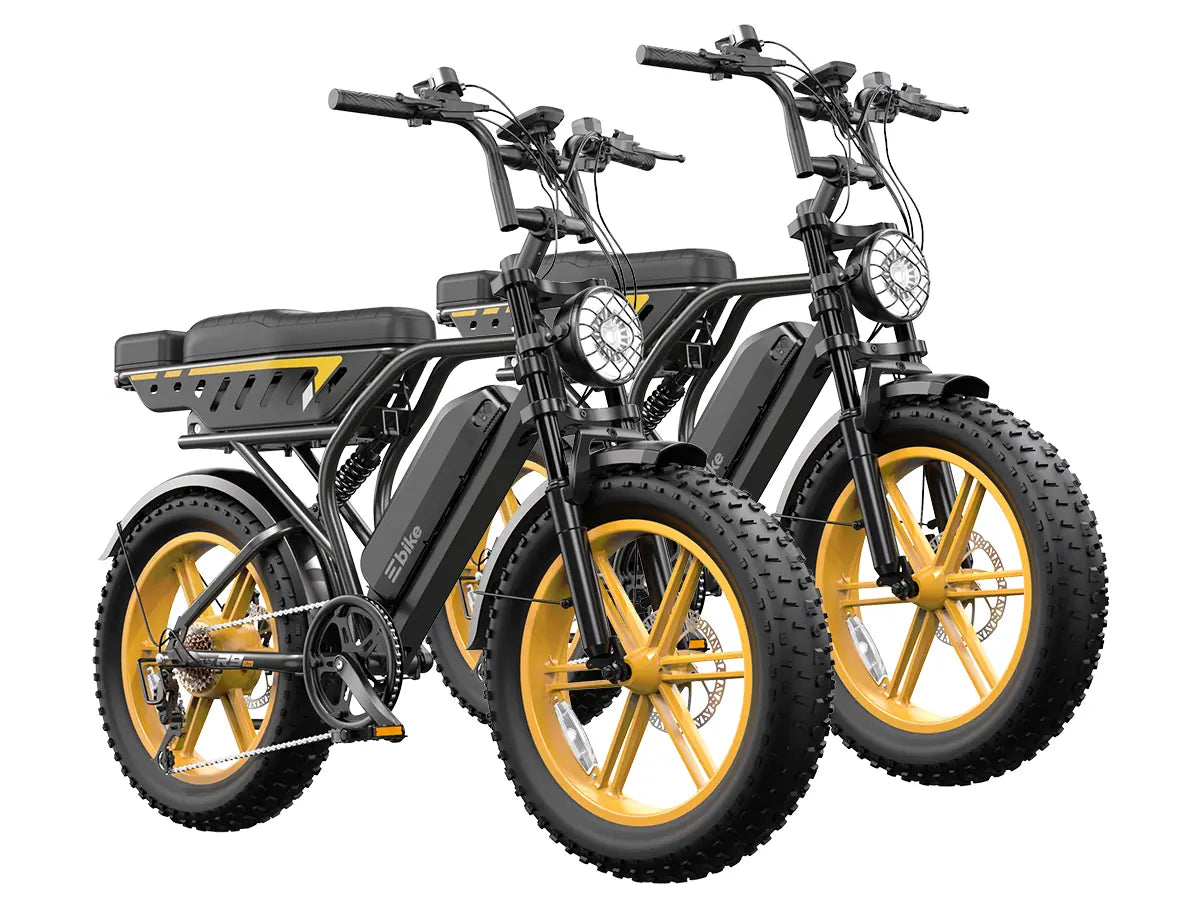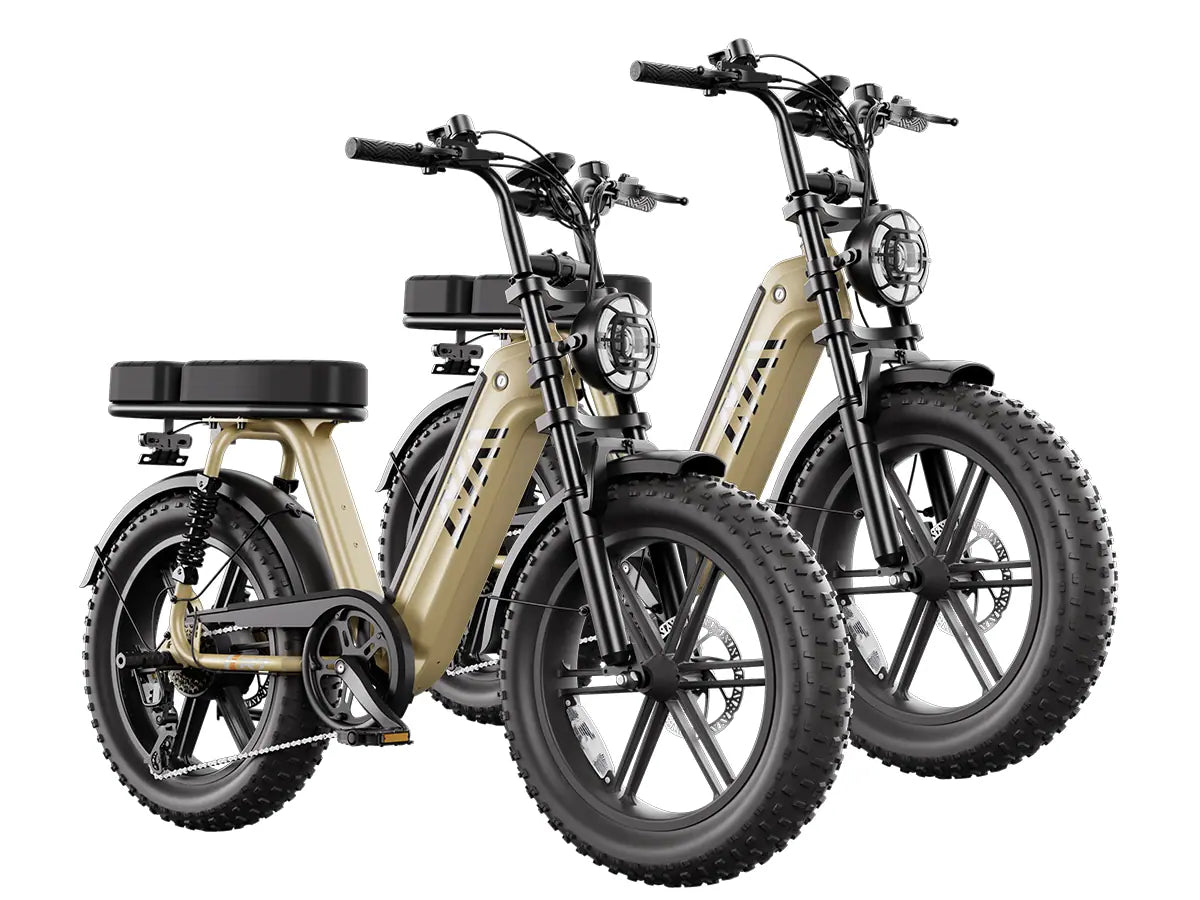A 1000W commuter e-bike offers high power and torque, enabling swift acceleration and hill climbing, but this increased power comes with higher energy consumption compared to lower-wattage models. While 1000W motors can reach speeds up to 35 mph, their efficiency depends on riding conditions, motor quality, and usage patterns. Proper riding techniques and balanced pedal assist levels optimize energy use, delivering a practical balance between performance and battery range.
How Does a 1000W Motor Compare to Lower Wattage Motors in Efficiency?
A 1000W motor provides peak power output of around 1000 watts and continuous cruising power between 600-700 watts, compared to 750W motors that cruise around 400-500 watts. This extra power improves acceleration and hill-climbing but increases battery drain. Efficiency varies with terrain, rider weight, and assist level. For example, a 750W motor may offer longer range on flat terrain, while a 1000W motor excels on hilly or heavy-load routes.
Chart: Power Output and Efficiency Comparison
| Motor Wattage | Peak Power (W) | Continuous Power (W) | Typical Max Speed (mph) | Efficiency Consideration |
|---|---|---|---|---|
| 750W | 750 | 400-500 | 20-28 | More energy-efficient on flats |
| 1000W | 1000 | 600-700 | 28-35 | Higher power, more battery use |
What Factors Affect 1000W E-Bike Efficiency?
Efficiency depends on rider weight, terrain steepness, riding style, assistance level, speed, and battery capacity. Balanced usage, moderate speeds, and proper tire pressure help maintain efficiency even with high-wattage motors.
- Terrain and Elevation: Steep hills increase power demand, reducing efficiency.
- Rider Weight and Cargo: Heavier loads require more motor effort.
- Speed and Acceleration: Frequent rapid acceleration consumes more energy.
- Environmental Conditions: Headwinds and wet surfaces can reduce efficiency by 10-25%.
- Motor and Battery Quality: High-quality components improve power delivery and reduce losses.
How Can Riders Maximize Efficiency on a 1000W Commuter E-Bike?
Using moderate pedal assist levels (3-4 out of 5) balances power and battery consumption. Avoiding constant full throttle and maintaining steady speeds reduces energy drain. Regular maintenance, such as tire inflation and drivetrain lubrication, also improves efficiency. Monitoring motor temperature during climbs prevents overheating, which can degrade performance.
What Is the Typical Range and Speed of a 1000W Commuter E-Bike?
Most 1000W commuter e-bikes achieve top speeds between 28 and 35 mph, depending on local restrictions and bike design. Typical ranges on a full charge vary from 40 to 60 miles, influenced by battery capacity, terrain, and riding style. Higher speeds and aggressive riding reduce range, while efficient use of pedal assist extends it.
Why Choose a 1000W Motor for Commuting Despite Efficiency Trade-Offs?
A 1000W motor provides superior acceleration, hill-climbing ability, and payload capacity, essential for riders in hilly cities or those carrying cargo. The trade-off in efficiency is offset by improved versatility and safety in traffic. For riders prioritizing speed and power, a 1000W commuter e-bike offers a compelling balance.
Buying Tips
When selecting a 1000W commuter e-bike, consider:
- Battery capacity and quality to support your range needs.
- Motor controller quality for smooth power delivery.
- Braking system, preferably hydraulic discs for safety at higher speeds.
- Frame design and suspension for comfort.
- Local regulations regarding motor power and speed limits.
- Test ride to evaluate power, handling, and battery life.
These factors help optimize your investment in a powerful yet efficient commuter e-bike.
TST EBike Expert Views
“Our 1000W commuter e-bikes deliver robust power for urban and hilly environments, balancing acceleration and torque with thoughtful battery management. Riders should use moderate pedal assist levels to maximize efficiency and range, ensuring a reliable and enjoyable commuting experience.” – TST EBike Product Specialist
FAQ
Does a 1000W motor consume more battery than a 750W?
Yes, generally it uses more energy, especially under heavy load or high speeds.
Can a 1000W e-bike be efficient for daily commuting?
Yes, with proper riding techniques and moderate assist levels, efficiency improves.
What speed can a 1000W commuter e-bike reach?
Typically 28-35 mph depending on design and local regulations.
How does terrain affect efficiency?
Hills and rough surfaces increase power demand, reducing range.
A 1000W commuter e-bike offers powerful performance with moderate efficiency that depends on riding habits, terrain, and component quality, making it suitable for riders needing extra power without sacrificing practical range.




























Leave a comment
This site is protected by hCaptcha and the hCaptcha Privacy Policy and Terms of Service apply.